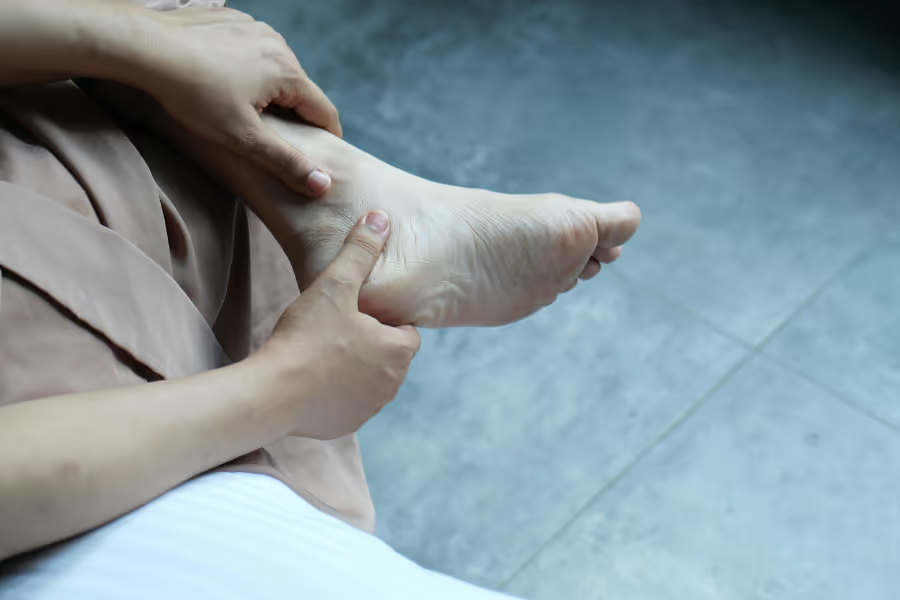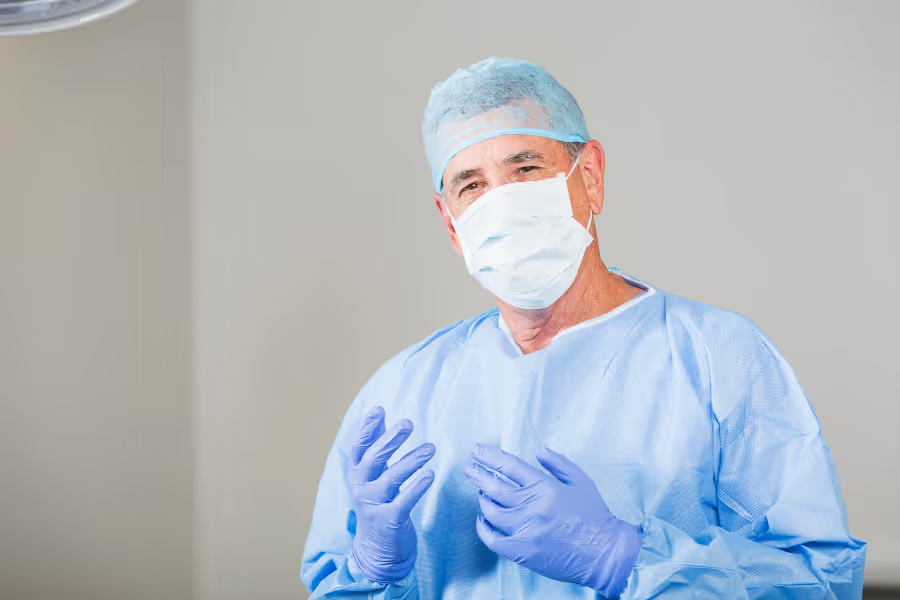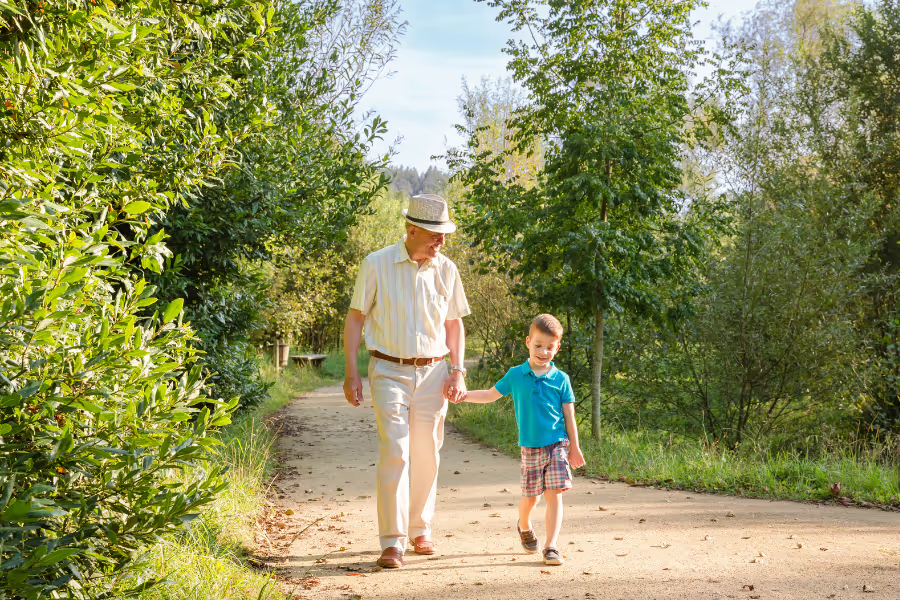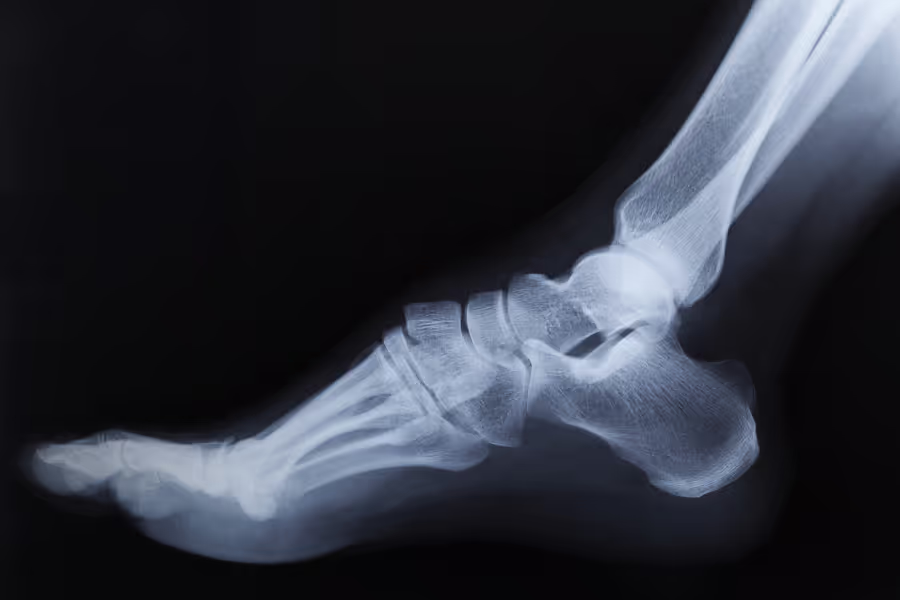Foot and ankle arthroscopy may help if persistent pain, swelling, catching, or locking is disrupting your sleep, sports, work, and daily life. Learn more and find the right surgeon that fits your needs below, serving Canadians in major cities like Vancouver, British Columbia; Calgary, Alberta; Toronto, Ontario; and Montréal, Québec.
Informational purposes only, not medical or legal advice. Please consult your doctor or surgeon.

Foot and ankle arthroscopy is a “keyhole” surgery that lets doctors see inside your joint and fix problems using tiny tools.
Instead of a large cut, the surgeon makes a few small incisions and inserts a pencil‑thin camera (an arthroscope). The camera shows a magnified, real‑time view on a screen, so the surgeon can precisely work inside the joint.
Through other small portals, the surgeon can remove loose cartilage or bone fragments, smooth rough joint surfaces, shave bone spurs, release tight tissue, or treat inflamed lining (synovitis).
Because it uses small instruments and a camera, arthroscopy allows detailed inspection and targeted treatment while preserving surrounding tissues. It’s mainly chosen when imaging and exam suggest a treatable problem inside the joint that benefits from direct visualization and delicate, controlled work.
When every step hurts, time matters. Instead of waiting months for consultation and OR time, private centres can often schedule arthroscopy within weeks—reducing time spent with locking, catching, impingement pain, or swelling, and helping you get back to daily life sooner.
Going private gives you more say in your care. You can:
Patients value knowing exactly who will operate, when it will happen, and the detailed plan (scope targets, imaging, anesthesia approach, rehab milestones). Clear timelines ease anxiety and help families coordinate time off, support, and physiotherapy.
Function and quality of life: Limits months of pain, limping, swelling, and activity restrictions that disrupt work, school, and sleep.
Joint health: Ongoing impingement, loose bodies, or cartilage lesions can worsen stiffness and wear; earlier arthroscopy can address mechanical problems before they escalate.
Surgical complexity: Repeated inflammation and scar can make later procedures more extensive, with tougher rehab.
Mental load: Shortens time living with uncertainty, restricted activities, and persistent night pain.

Most foot/ankle arthroscopies take about 45–90 minutes of operating time. Expect a few extra hours at the center for check‑in, anesthesia, and recovery before you go home.
Basic steps:

Your plan comes from your surgical team and can vary. Take rehab seriously—the more consistent you are, the better your outcome. Some private clinics offer virtual follow‑ups or coordinate physio near home. In general, what to expect after foot or ankle arthroscopy:
Week 1
Reality check: pain, swelling, stiffness, awkward sleep. Not fun.
Goals: control pain/swelling, protect the scope sites, prevent blood clots.
Activities:
You might be non‑weight‑bearing or partial weight—follow your surgeon. Keep dressings dry; take meds as directed. Have a helper for a few days.
Weeks 2–4
Still puffy but improving.
Goals: safe mobility and gentle range of motion (ROM).
Activities:
Weeks 5–12
The work phase.
Goals: near‑full ROM, start strength, normalize walking pattern.
Activities:
Weeks 13–52
Back to real‑world function.
Goals: full or near‑full ROM and strength; steady walking, stairs, and longer days on your feet.
Activities:
Red flags anytime: fever, worsening redness/drainage, calf pain/swelling, chest pain/shortness of breath, sudden severe ankle pain or numbness—contact your care team.
Foot and ankle arthroscopy is a minimally invasive surgery, however the costs are significant and very because of the potential complexity involved in certain instances. Private clinics in Canada typically charge $6,500 to $12,000.
In the United States, the average cost is CA$22,200.
Costs vary so much because of location, surgeon experience, facility type, scope of potential treatments, complexity of the issue, and included services (some clinics offer all-inclusive, while others charge separately for anesthesia, followup care, etc.).
Choosing your surgeon is one of the benefits of going the private route. Here’s what to consider and the key questions to bring to your foot orankle arthroscopy consultation.
Foot and ankle arthroscopy is a minimally invasive surgery where a surgeon uses a tiny camera and tools to look inside your joint and fix specific problems. It might be right for you if:
Common reasons people get foot/ankle arthroscopy
When arthroscopy might not be right
No, you do not need a referral for private foot and ankle arthroscopy in Canada. You can book a consultation directly with a surgeon, and they will review your condition, symptoms, and any previous treatments or diagnostics.
Your surgeon will tailor instructions based on your exact procedure (e.g., debridement, loose body removal, impingement, microfracture, TFCC-style ankle work).
Pre-surgery exercises: Expect gentle range-of-motion work (as tolerated), calf flexibility, and swelling control (elevation, compression if advised). Strengthen hips, core, and the opposite leg to prepare for crutches/scooter. If microfracture is planned, avoid painful loading.
Quit nicotine: Stop smoking/vaping/chew at least 4+ weeks before surgery—nicotine slows healing and raises infection/wound risks.
Weight and fitness: Balanced diet, light cardio (bike/upper-body ergometer), good sleep, and hydration all help recovery.
Medications: Share a full list of meds and supplements. You may need to pause blood thinners, certain NSAIDs, and herbal supplements that increase bleeding—only with your surgeon/doctor’s approval.
Pre-op testing: You may need bloodwork, updated imaging, or medical clearance depending on your health.
Safety first: Remove tripping hazards (cords, sliding rugs, clutter). Keep essentials at waist height to avoid bending/hopping.
Bathroom: Consider a shower chair, non-slip mat, and grab bars. A handheld showerhead helps with seated bathing. Keep towels and toiletries within easy reach.
Elevation station: Set up a spot where you can elevate your leg above heart level with pillows. Keep ice/cold packs, water, phone/charger, meds, and snacks nearby.
Mobility aids: Arrange crutches, a walker, or a knee scooter (if allowed). Practice before surgery. A raised toilet seat or bedside commode can help if stairs are tricky.
Clothing/footwear: Loose pants with wide cuffs or shorts; slip-on shoe for the non-operative foot with good grip. You’ll likely have a splint/boot after surgery.
A helper: Arrange a ride home and someone to stay the first 24–48 hours. Identify a backup contact for the first couple of weeks.
Work/school/chores: Plan time off. Desk work may resume sooner than manual labor, but expect restrictions on standing, walking, and lifting. Line up help for groceries, pets, and housekeeping.
Stairs: If possible, set up a main-floor sleeping area. Practice safe stair technique with crutches/handrail before surgery.
Surgery-day prepFasting: Follow anesthesia instructions exactly (no food after the cutoff; clear fluids as allowed).
Skin prep: Use the antiseptic wash (e.g., chlorhexidine) the night before and the morning of surgery. Do not shave your leg.
What to bring: Photo ID, medication list, comfortable loose clothing/shorts, and your mobility device if asked.
Jewelry/nails: Remove ankle bracelets/rings and avoid heavy nail polish on the operative foot to allow circulation checks.
Pain plan: You may get a nerve block that numbs the leg for 12–24 hours. Fill pain prescriptions beforehand. Have acetaminophen ± NSAIDs (if approved) ready. Take the first dose before the block wears off.
Nausea/constipation: Ask for anti-nausea meds if you’ve had issues. Get stool softeners/fiber—pain meds can constipate.
DVT prevention: You may receive a blood thinner or mobility plan (ankle/calf pumps on the non-operative leg, short walks as allowed). Know your regimen.
Swelling control: Elevate above heart level frequently and ice as directed.
Transfers and mobility: Practice getting in/out of bed, on/off the toilet, and in/out of a car without putting weight on the operative foot/ankle (if you’ll be non–weight bearing).
Bathing/dressing: Rehearse seated bathing and dressing. Long-handled sponge, shower chair, and a grabber can help.
One-legged routine: Plan simple meals, containers you can open easily, and a place to sit while doing chores.
Your individual risk depends on your health, foot/ankle anatomy, the exact problem being treated (loose bodies, impingement, cartilage lesion, synovitis, instability), the surgical approach, and how closely you follow rehab. Discuss your specific risks with your surgeon.
Your own situation depends on your pain level, how well you can walk and do daily stuff, what imaging shows (loose bodies, bone spurs, cartilage damage, synovitis, scar bands), your sport/work demands, and how well non‑surgical care works (physio, bracing, shoe changes, meds, injections). Discuss specifics with your surgeon.
Foot and ankle arthroscopy treats a range of issues in the foot or ankle, and some involve more substantial recovery times than others. Your return to normal activity and sport will depend on your unique circumstances.
In general, you can expect normal weight bearing within 2-3 months, retuning to low impact sport within 6-8 months, and full recovery within ~12 months.
Always consult your surgeon and physio for guidance.

Browse vetted foot and ankle surgeons across Canada. Compare prices, qualifications, locations.
BROWSE SURGEONS